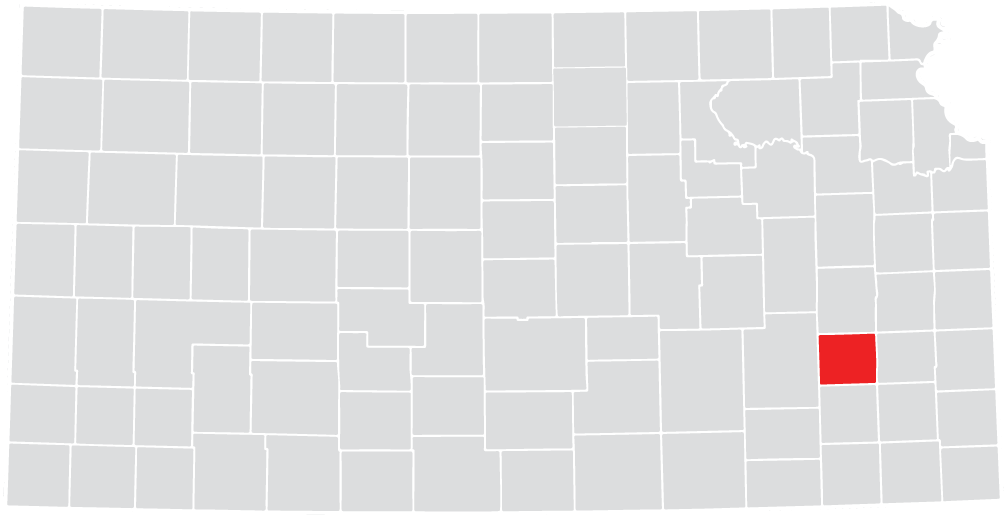Welcome to Woodson County, Kansas
Candle Safety
Candles may be pretty to look at but they are a cause of home fires — and home fire deaths. Remember, a candle is an open flame, which means that it can easily ignite anything that can burn.
- Blow out all candles when you leave the room or go to bed. Avoid the use of candles in the bedroom and other areas where people may fall asleep.
- Keep candles at least 12 inches away from anything that can burn.
- Never leave a child alone in a room with a burning candle.
- Keep matches and lighters up high and out of children’s reach, in a locked cabinet.
- Consider using flameless candles in your home. They look and smell like real candles.
- Use candle holders that are sturdy, and won’t tip over easily.
- Put candle holders on a sturdy, uncluttered surface.
- Light candles carefully. Keep your hair and any loose clothing away from the flame.
- Don’t burn a candle all the way down — put it out before it gets too close to the holder or container.
- Never use a candle if oxygen is used in the home.
- Have flashlights and battery-powered lighting ready to use during a power outage. Never use candles.
Candle Facts
- December is the peak time of year for home candle fires.
- Roughly one-third of home candle fires started in the bedroom.
- More than half of all candle fires start when things that can burn are too close to the candle.
Information obtained from the Kansas State Fire Marshall website @ https://firemarshal.ks.gov/agency-resources/education/candle-safety
FLOOD SAFETY
Tune to the NOAA Weather Radio or your local news source for all flood information.
* Flash Floods kill more people each year than any other weather phenomenon.
* 6 inches of fast moving water can sweep you off of your feet.
*18-24 inches of water is enough to float a car and carry it away.
* Leave areas subject to flooding, such as dips, low spots and underpasses during periods of rain.
* Do not attempt to cross flowing streams, you can't determine how deep the water is.
* If your vehicle is suddenly caught in rising water, leave it immediately and seek higher ground.
IF YOU SEE A ROAD BARRIER ACROSS A FLOODED ROADWAY.........
TURN AROUND. DON’T DROWN!
Report any flooding the your local authorities or to the National Weather Service.
LIGHTNING SAFETY
* Watch for developing thunderstorms and be ready to act when thunder is heard.
* Lightning can strike as far as 10 miles from an area where it is raining. Thats about the distance you can hear thunder.
If you can hear thunder, you are within striking distance of lightning. Seek safe shelter IMMEDIATELY!
PRECAUTIONS:
- Outdoor Activities: Minimize the risk of being struck by moving indoors or to vehicles at the first sound of thunder.
- Inside Activities: Things to avoid:
* Corded Phones
* Computers
* Other electrical equipment
* Indoor/Outdoor Pools
* Tubs and showers and other things connected to metal plumbing
Wait 30 minutes after the last roar of thunder before going outside again.
Help a Lightning Victim: Call 911 and get help immediately. You are in no danger helping a lightning victim. The charge will not affect you.
WHEN THUNDER ROARS, GO INDOORS!
During extremely hot and humid weather, your body’s ability to cool itself is challenged. When the body heats too rapidly to cool itself properly, or when too much fluid or salt is lost through dehydration or sweating, body temperature rises and you or someone you care about may experience a heat-related illness. It is important to know the symptons of excessive heat exposure and the appropriate responses. Here is a list of warning signs and symptoms of heat illness and the recommended first aid steps.
HEAT EXHAUSTION
| SYMPTOMS | FIRST AID |
| * Heavy sweating | * Move to a cool place |
| * Cold, pale, and clammy skin | * Loosen your clothes |
| * Fast, weak pulse | * Put cool, wet cloths on your body or take a cool bath |
| * Nausea or vomiting | * Sip Water |
| * Muscle cramps | |
| * Tiredness or weakness | Get Medical Help right away if: |
| * Dizziness | * You are throwing up |
| * Headache | * Your symptoms get worse after being in a cool place |
| * Fainting (passing out) | * Your symptoms last longer than an hour |
HEAT CRAMPS
| SYMPTOMS | FIRST AID |
| * Heavy sweating during intense exercise | * Stop physical activity and move to a cool place |
| * Muscle pain or spasms | * Drink Water or a sports drink |
| * Wait for cramps to go away before you do | |
| anymore physical activity | |
| Get Medical Help right away if: | |
| * Cramps last longer than an hour | |
| * Your on a low-sodium diet | |
| * You have heart problems |
SUNBURN
| SYMPTOMS | FIRST AID |
| Painful, red and warm skin | Stay out of the sun until burn heals |
| Blisters on the skin |
Put cool cloths on sunburned areas |
| Take a cool bath | |
| Put moisturizing lotion on burned areas | |
| DO NOT break blisters |
HEAT RASH
| SYMPTOMS | FIRST AID |
| * Red clusters of small blisters that look like pimples | * Stay in a cool, dry place |
|
on the skin (usually on the neck, chest, groin, or in |
* Keep the rash dry |
| creases of elbows or knees) | * Use powder to soothe the rash |
HEAT STROKE
| SYMPTOMS | FIRST AID |
|
* High body temperature (103 or higher) |
* Call 911 right away |
| * Hot, red, dry, or damp skin | * Move person to a cooler place |
| * Fast, strong pulse | * Help lower person's temperature |
| * Headache | with cool cloths or a cool bath |
| * Dizziness | * Do not give the person a drink |
| * Nausea | |
| * Confusion | |
| * Losing consciousness (passing out) |
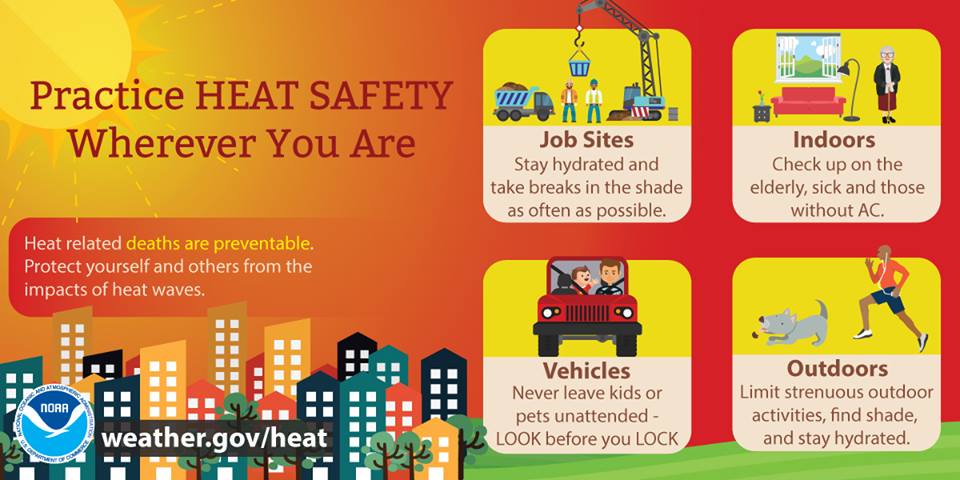
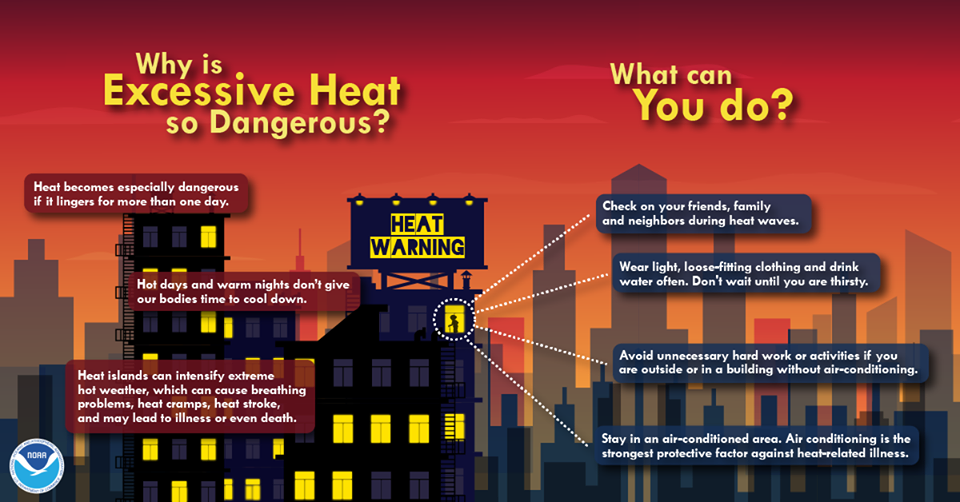
For Additional Information On Heat Safety Please Visit:
Have you ever sat down with your family to discuss and plan what you would do in case of an immediate weather threat? If you haven’t, now would be an excellent time to sit down with your family and devise a plan. Finding the time to do this can be difficult, but taking 15 minutes to develop and practice a plan could save the lives of the ones you love. Please remember these tips when planning and carrying out your actions.
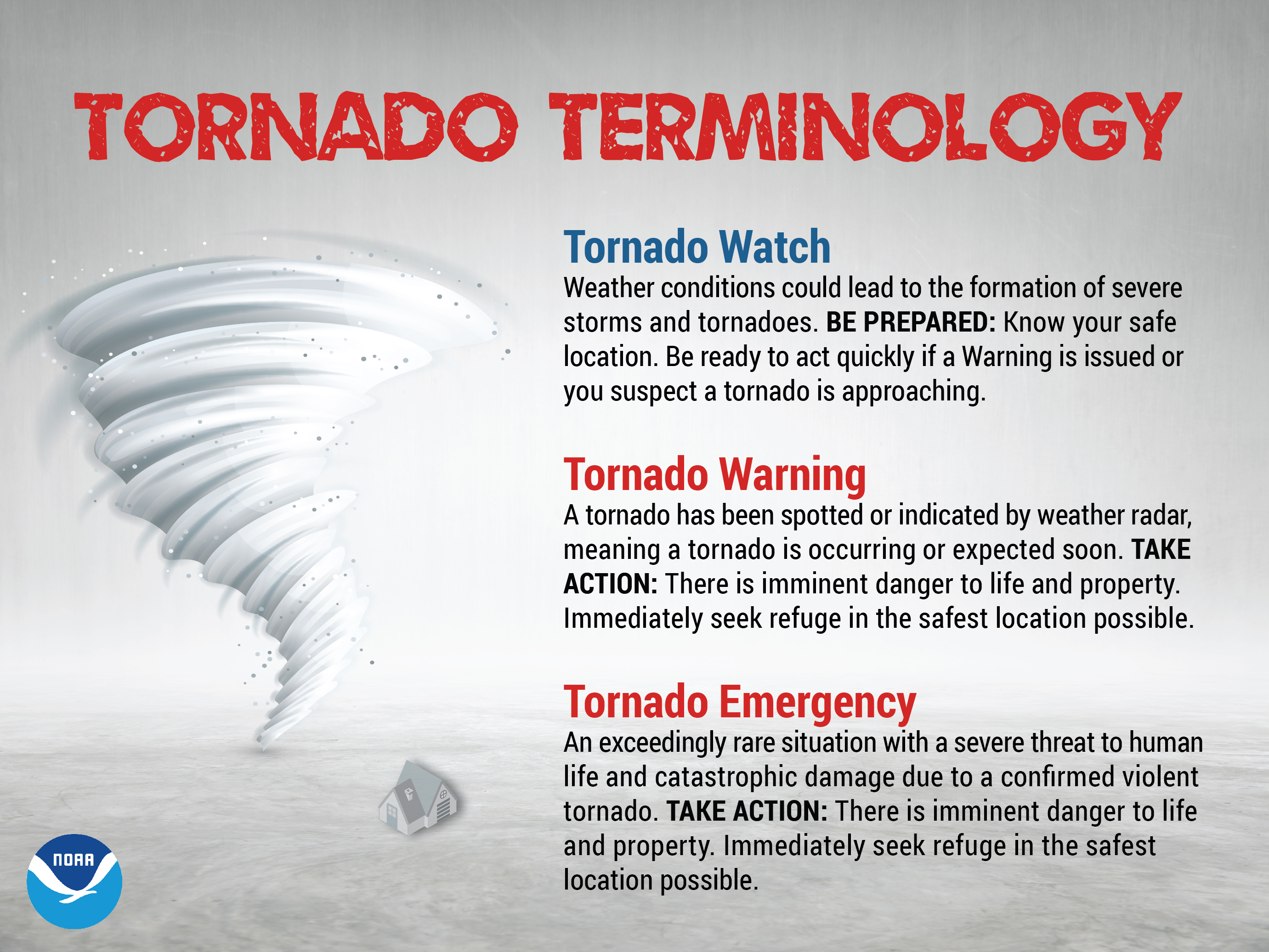
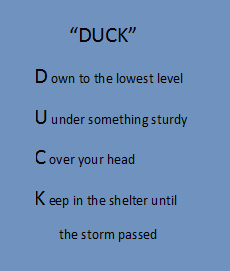
TORNADO SAFETY TIPS
Before the storm:
v Develop a plan of action
v Have frequent drills
v Have a NOAA Weather Radio with a warning alarm tone
v Listen to radio and television for information
v If planning a trip outdoors, listen to forecasts
If a warning is issued or threatening weather approaches:
v Always remember “DUCK”
v Stay away from windows
v Get out of automobiles and get into a sturdy structure of ditch
v Or, buckle your seat belt and get below window level of your vehicle
In Homes or Small Buildings:
Go to the basement or to an interior room on the lowest floor (closet or bathroom). Upper floors are unsafe. If there is no time to descend, go to a closet, a small room with strong walls or an inside hallway. Wrap yourself in blankets to protect yourself from flying debris.
In Schools, Hospitals, Factories or Shopping Centers:
Go to interior rooms and halls on the lowest floor. Stay away from glass enclosed places or areas with wide span roofs such as auditoriums and warehouses. Crouch down and cover your head. Don’t take shelter in halls that open to the south or the west. Centrally-located stairwells are good shelter.
In High-Rise Buildings:
Go to interior small rooms (bathrooms or closets) or hallways. Stay away from exterior walls or areas with glass.
In Mobile Homes:
ABANDON THEM IMMEDIATELY!!!!
Many deaths occur in mobile homes. If you are in a mobile home when severe weather approaches, leave it immediately and go to a substantial structure or designated tornado shelter. Determine your shelter ahead of time so you don’t have to think about it when weather strikes.
In open areas outside:
Lie flat in the nearest ditch or depression and use your hands to cover your head. Watch for rising water. Flash floods can occur quickly and lying in a ditch puts you at risk.
Tornadoes and Overpass Safety
Many people mistakenly think that a highway overpass provides safety from a tornado. In reality, an overpass may be one of the worst places to seek shelter from a tornado. Seeking shelter under an overpass puts you at greater risk of being killed or seriously injured by flying debris from the powerful tornadic winds.
Tornadic winds can make the most benign item a dangerous missile. In addition to the debris that can injure you, the winds under an overpass are channeled and could easily blow you or carry you out from under the overpass and throw you 100s of yards.
As a last resort, lie flat in a ditch, ravine, or below grade culvert to protect yourself from flying debris. If no ditch is available, you may remain in your vehicle, put on your seatbelt, lower yourself below window level, and cover your head with your hands or a blanket.
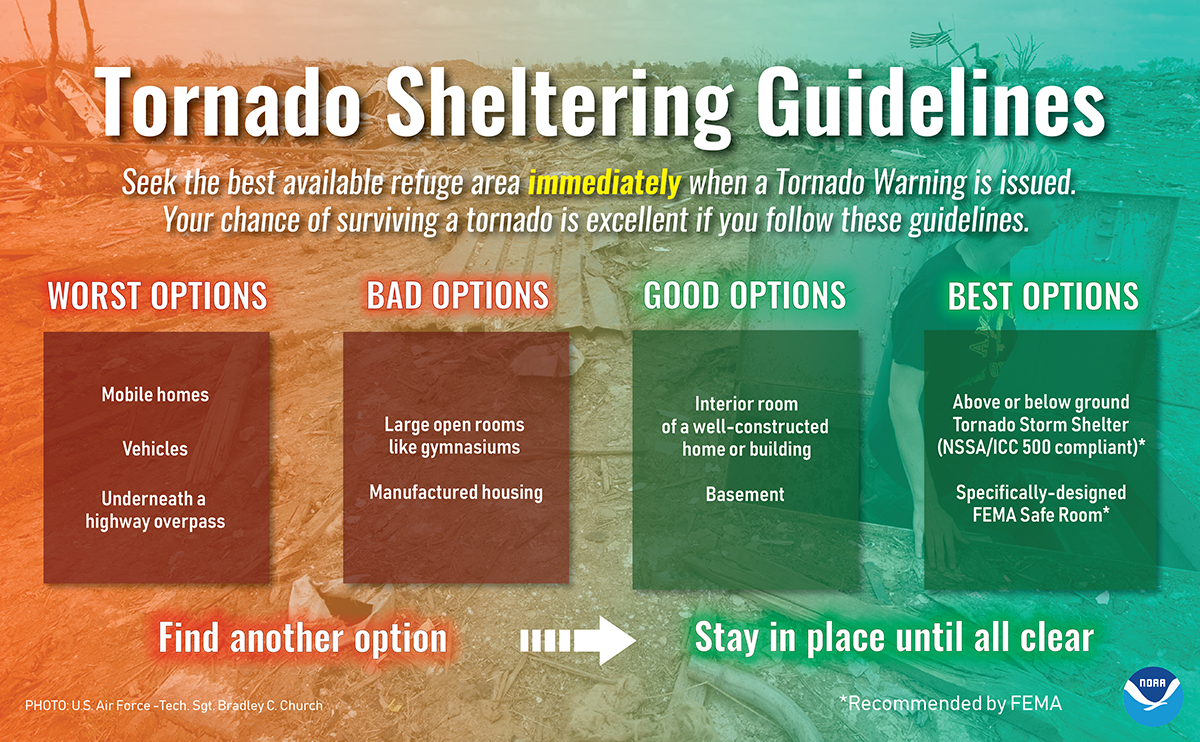
For Additional Information on Tornado Safety Please Visit:
Learn about Tornadoes and how to prepare! (National Weather Service)


